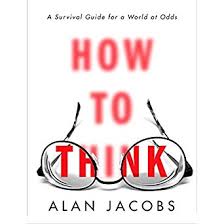On Reading Well - A Review
It is a general rule that when Karen Swallow Prior writes something, you should read it. Her latest book, On Reading Well, is no exception.
In this volume, Prior brings her lifelong interest in literature, which has culminated in her work as a professor of English, and an interest in seeing people–particularly Christians–live ethically.
Her thesis in On Reading Well is that careful reading of literature forms the human soul. Even books that were not written with a specific moral—and perhaps especially those not written with a specific moral—can be morally formative when the story is well-told. In one sense, we borrow the memories of the characters by living their experiences vicariously when we read carefully.
To carry out her mission, Prior selects twelve books that might find their way on the reading list of university syllabus in any setting, then explores their moral terrain. A clear message from Prior’s curated list is that we can learn from the human condition well explored, whether or not we agree with the theology of the author.
The literary discussions are framed in terms of virtues, with four chapters on the cardinal virtue, three on the theological virtues, and another five on what Prior calls the heavenly virtues. When the virtues are discussed as concepts with their substance filled from contemporary sources, such approaches often fall short of the mark. This structure works and is edifying, in part, because the content of these virtues is filled with substance from the Christian tradition, with influence from classical thinkers who have also influenced Christians throughout the centuries.
I have previously read most of the works Prior covers. In some cases, it has been several decades. There were four chapters on material I have never read (I won’t say which, lest some readers get judgmental.), but Prior’s careful discussion enables even an unexposed reader to gain from the chapters.
Readers will benefit more from the book if they have read all of the literature Prior discusses. Perhaps the most beneficial approach would be to read the particular work of literature just prior to reading each chapter. However, for those simply seeking to grow and better understand how humans ought to live, this book can stand on its own.
At one level, this is a book that teaches readers about ethics. At another level, On Reading Well is a warm invitation into the world of literature. This invitation is extended graciously and unpretentiously.
Reading literature is important for those seeking to really know people around them. This is especially true of pastors and theologians. As a theologian, I have found that my ability to empathize with others, to understand, and to explain hard concepts clearly ebbs and flows based on my reading. One might think this would have primarily to do with the theology that I read, but it has more to do with the literature that I am reading. Specifically, when I am reading imaginative stories (not all of which is quality literature), my imagination is invigorated. I am equipped with clearer illustrations of sometimes complex theological or ethical concepts. Often these are not drawn specifically from the book that I am reading, but simply a reflection of the pattern of thought that comes from reading a good story well told.
Prior taps into the link between the moral imagination and reading. We are formed by what we read and how we read. A subtext throughout this volume is the call to read and think carefully about the books we encounter. This is no guide to chugging through an arbitrary list of supposedly important texts, but a demonstration of the sort of thoughtfulness that should characterize the time we spend partaking of good books.
On Reading Well is enjoyable for its quality as a book in itself. For those who enjoy reading literature, it is a treat worthy of a fireside reading. This has a place in the library of homeschool families, where it shows what close reading looks like and may help some families move beyond the list of reading comprehension questions into discussions about the soul of the literature they encounter. Pastors can benefit from this by exploring thought beyond the bounds of commentaries, the latest non-fiction volumes, and even classical theological works. The church will benefit if the men called to preach are reading good books carefully, even if it does not lead directly to sermon references.
NOTE: I received a gratis copy of this volume from the publisher with no expectation of a positive review.





















Reading your Bible is a battle. There’s a reason why Paul lists Scripture as the sword of the Spirit in his discussion of the armor of God (Eph. 6:17). More even than that, Scripture reveals God’s character and is, thus, central to worshiping well (Psalm 119). That’s why reading the Bible is a battle.